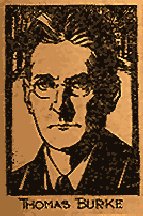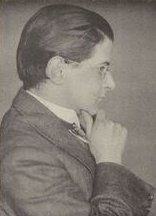Heroes of the Dark Continent or How Stanley Found Emin Pasha
~ The Great New Pictorial Africa ~ 1890 ~ Historical Publishing Company
~ Illustrated with 500 engravings and colored plates. 590 pages plus 2
pages of advertising.
A COMPLETE HISTORY OF ALL THE GREAT EXPLORATIONS AND
DISCOVERIES IN AFRICA, FROM THE EARLIEST AGES TO THE PRESENT TIME, INCLUDING
A FULL, AUTHENTIC AND THRILLING ACCOUNT OF STANLEY'S FAMOUS RELIEF OF EMIN
PASHA, REPLETE WITH ASTOUNDING INCIDENTS, WONDERFUL ADVENTURES, MYSTERIOUS
PROVIDENCES, GRAND ACHIEVEMENTS, AND GLORIOUS DEEDS AS REPRESENTED IN THE
DEVOTED LIVES AND SPLENDID CAREERS OF SUM BRILLIANT CHARACTERS AS HENRY
STANLEY, EMIN PASH, GEN. GORDON, AND ALL THE OTHER GREAT TRAVELLERS, HUNTERS
AND EXPLORERS, WHO, FOR MORE THAN ONE THOUSAND YEARS, HAVE MADE AFRICA
A LAND OF WONDERS BY THEIR HEROISM AND UNPARALLELED DARING.
This book covers the whole history of African exploration
and discovery. The illustrationsk are very detailed and beautiful.
J.W. Buel ihas written many other tales of the world. He has also
included tales of adventures among wild animals, ferocious reptiles, and
curious and savage races of people who inhabit the Dark Continent.
On the second page are illustrations of African people.
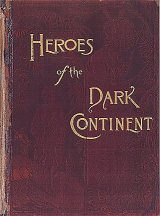 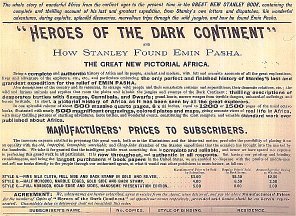 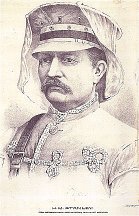

From ERBzine 1151
Excerpts: The Origin of Tarzan:
The Mystery of Tarzan's Creation Solved
by Sarkis Atamian with Foreword
by George T. McWhorter
Copyright 1997 by Sarkas
Ataman ~ Published by Publication Consultants
PO Box 221974
~ Anchorage, Alaska 99522-1974
With few exceptions, five generations
of critics have laid much of Burroughs' inspiration at the doorsteps of
Kipling, Haggard, and Wells. But Mr. Atamian points the arrow directly
at two lesser know writers, Paul Du Chaillu and J. W. Buell, as the major
sources, both direct and subliminal, of the Burroughs mind-fix. He shows
that Buell and Du Chaillu provided essential background reading which Burroughs
used systematically for his themes, situations and, significantly, for
his nomenclature.
From the Foreword
of The Origin of Tarzan
George T. McWhorter, Curator
Burroughs Memorial Collection
University of Louisville
Page 84 and 85:
". . . ERB wrote the
Return
[of Tarzan], from start to finish, in 70 days! That is as fast as lightning
for a novel given the complexities of the plot. ERB could not have had
time for a leisurely stroll through the book shelves doing "research,"
in a dozen books -- he wouldn't even have time for a quick reading of them.
But he could and did read one book (or had already read it) which contained
most of the important items he needed for more than half of the Return
after Tarzan's dissipation in Paris. The book was Buell's Heroes!
And there are traces of it in the Beasts
[of Tarzan] and [The Jewels of] Opar,
and even Tarzan
[of the Apes].
"In summation, there could
be hundreds of words from a dozen different sources which coincidentally
could be used by ERB. But here, there are two books (Paul Du Chaillu's
Explorations
and Adventures in Equatorial Africa and J. W. Buell's
Heroes of
the Dark Continent) in which all these words and ideas can be related
to their contexts in ERB. And these original contexts and sources appear
within 30 to 100 pages of each other (depending on the book), which contain
all the original cognates, themes, and symbols.
"In varying degrees, all
of the first six Tarzan books in the chronology have a Buell influence.
The least of these is Mirambo-Aruwimi in Tarzan
of the Apes and Baynes (and a companion) who hunt big game together
in the Son of Tarzan,
the fourth book in the chronology. Admittedly, these are weak. In the second
volume, the Return
, of the 26 chapters, only the first six have no connection Buell. In the
remaining 20, the actions, plots, themes, and names are all in Buell from
the theme of castaways, to cannibalism: from the lost and ruined city of
Opar and its treasure vaults to La; from Arabs to Manyuema; from fifty
frightful men and dwarfs to superior breeding males. In the Beasts,
Kai-Shang and Fuchan are minor parts, but totally related to Buell and
vital in identifying a major source. In Opar,
the entire theme of Opar, La, and the historical allusions and La's appearance
and statements, as well as the high-priestesses and Amazonian theme is
totally related to Buell. In Jungle
Tales, of 12 chapters, five of them revolve around central characters,
themes and names from Buell, form the N'Ganga to Du Chaillu's Bukawai;
from exploding bullets to Teeka; from Rabba Kega in Tarzan and the Black
Boy, to Jungle Joke. In chapters five, six, seven (of Jungle
Tales), which form a trilogy, the main names, themes and plots
are entirely from Buell, from witchcraft to Tibo."
OTHER:
The Story of Man
~ 1889 ~ Philadelphia: Historical Publishing Co. ~ 720 pages tanned
with 600 detailed Black and White engravings and numerous colored plates.
A Nemesis of Misgovernment
~ 1904 ~ Buel wrote this after he visited Europe at the turn of the century.
It is mostly about Czarist Russia before the Revolution. There are over
150 B/W illustrations - some are full page showing life in Russia at the
time
Beautiful Paris ~
1894 ~ Galveston: J. Singer Book Co. ~ Introduction by J. W. Buel ~ 400
views taken by A. Pepper, Official Photogarphyer of the French Government.
Sea and Land ~ 1887
~ Photos
The Savage World
~ 1891 ~ Historical Publishing Co.
A complete Natural History
of the World’s Creatures, fishes, reptiles, insects, birds and mammals.
. Founded upon the theory of the progression of species and in accordance
with genetic revelation scriptural truths and the harmony of nature with
introduction decribing the geological ages, changes in earth’s crust, fossil
remains of extinct animals and monsters of the ancient seas. Embellished
with over 1500 Elegant Engravings and 2 magnificent colored plates (#53
& #54). Copyrighted 1891 by H S Smith published by Historical Publishing
Co.
Conquering The Dark Continent
~ 1899 ~ Illustrated with Black and White Drawings ~ Official Publishing
Company England's battle with the Boers in the Transvaal including an exhaustive
history of the settlement of Cape Colony, wars with the kaffirs, Matabeles,
Zulus, the diamond and gold mines of South Africa and a history of exploration,
discovery, conquest and development by all the famous travelers that have
traversed the Dark Continent, etc
Heroes of the Plains:
Life and Wonderful Adventures of Wild Bill, Bufallo Bill and Exploits of
Gen Custer, Kit Carson, California Joe, Capt. Jack, Capt. D.L., Payne,
and White Beaver. ~ 1882
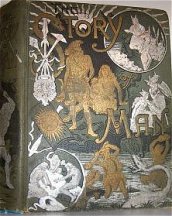 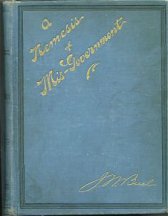 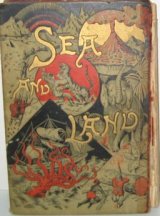 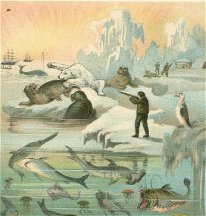
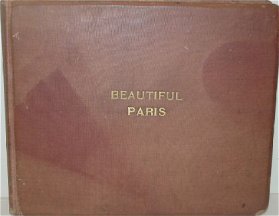 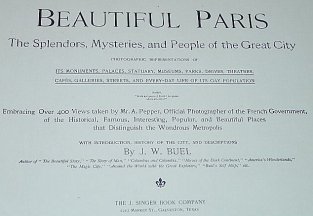
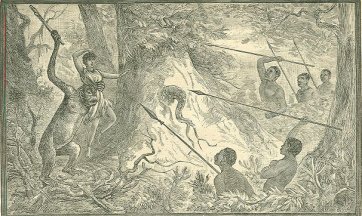
A chimpanzee capturing a woman ~ Sea and Land illustration
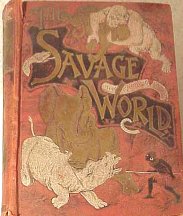 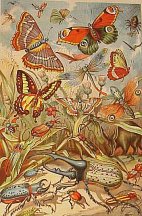 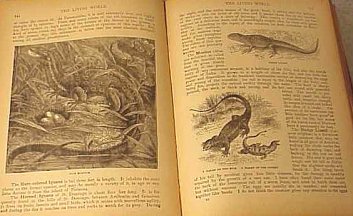
America's
Wonderland: 1893 Photos by J. W. Buel |

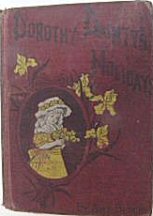
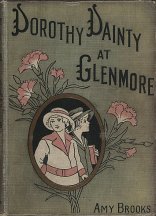
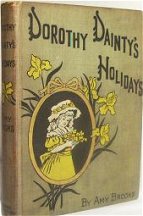
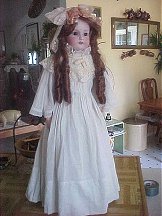
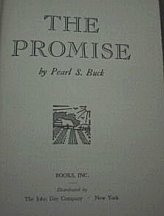
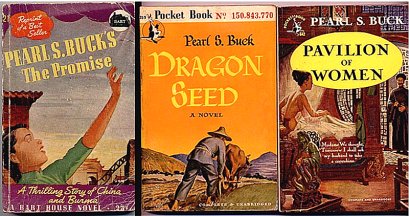
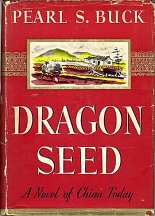
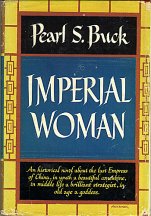
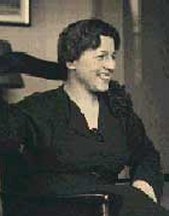 Pearl
S. Buck 1892 - 1973: Pearl Comfort Sydenstricker was born on
June 26, 1892 in the West Virginia home of her grandmother. She was born
the fourth of seven children to Caroline and Absalom, two Presbyterian
missionaries, who were home from China. The family quickly returned to
their home in Chinkiang, China three months after Pearls birth. Pearl grew
up among the Chinese peasants in a small farming community. Her first language
was Chinese, she grew up with the customs and traditions of the Chinese.
As she grew her mother and her teacher taught her English. In 1910, Pearl
returned to the United States to earn a degree at Randolph-Macon Womens
College in Lynchburg, Virginia. She studied philosophy and was very active
in the student government. She was elected class president and was a Phi
Beta Kappa. After her graduation in 1914, she stayed at Randolph-Macon
to teach psychology. After one semester she returned to China to assist
her ill mother. Pearl married John Lossing Buck, an agricultural missionary,
in China on May 13, 1917. The couple led a very unhappy life together.
In 1921, Pearl gave birth to a daughter, Carol, who was mentally disabled
with a disease called PKU. Pearl decided to return to the States and place
her in a full-time care facility in Vineland, New Jersey. Because of a
tumor found in Pearl's uterus during delivery, she underwent a hysterectomy.
From 1920-1933, the Bucks lived in Nanking on the campus of the university
where they both taught. Pearl published her first work in 1923, a nonfiction
article for Atlantic magazine titled "In China too." In 1925, while studying
at Cornell University, she wrote an article titled "A Chinese Woman Speaks"
which would later be the impetus for her first novel EAST WIND, WEST WIND,
published by the John Day Company in 1930. John Days publisher Richard
Walsh took an immediate liking to Pearl and her work. This was to be the
start of a long prosperous writing career in which she was awarded the
Pulitzer Prize for THE GOOD EARTH and became the first American woman to
receive the Nobel Prize for Literature. Pearl Buck divorced her husband
in 1935 after falling in love with Walsh. The couple moved into an estate
in Bucks County, Pennsylvania shortly after their marriage. Pearl and Richard
lived at Green Hills Farm with their six adopted children. It was at this
residence that she would write over 100 works before her death in 1973.
Pearl
S. Buck 1892 - 1973: Pearl Comfort Sydenstricker was born on
June 26, 1892 in the West Virginia home of her grandmother. She was born
the fourth of seven children to Caroline and Absalom, two Presbyterian
missionaries, who were home from China. The family quickly returned to
their home in Chinkiang, China three months after Pearls birth. Pearl grew
up among the Chinese peasants in a small farming community. Her first language
was Chinese, she grew up with the customs and traditions of the Chinese.
As she grew her mother and her teacher taught her English. In 1910, Pearl
returned to the United States to earn a degree at Randolph-Macon Womens
College in Lynchburg, Virginia. She studied philosophy and was very active
in the student government. She was elected class president and was a Phi
Beta Kappa. After her graduation in 1914, she stayed at Randolph-Macon
to teach psychology. After one semester she returned to China to assist
her ill mother. Pearl married John Lossing Buck, an agricultural missionary,
in China on May 13, 1917. The couple led a very unhappy life together.
In 1921, Pearl gave birth to a daughter, Carol, who was mentally disabled
with a disease called PKU. Pearl decided to return to the States and place
her in a full-time care facility in Vineland, New Jersey. Because of a
tumor found in Pearl's uterus during delivery, she underwent a hysterectomy.
From 1920-1933, the Bucks lived in Nanking on the campus of the university
where they both taught. Pearl published her first work in 1923, a nonfiction
article for Atlantic magazine titled "In China too." In 1925, while studying
at Cornell University, she wrote an article titled "A Chinese Woman Speaks"
which would later be the impetus for her first novel EAST WIND, WEST WIND,
published by the John Day Company in 1930. John Days publisher Richard
Walsh took an immediate liking to Pearl and her work. This was to be the
start of a long prosperous writing career in which she was awarded the
Pulitzer Prize for THE GOOD EARTH and became the first American woman to
receive the Nobel Prize for Literature. Pearl Buck divorced her husband
in 1935 after falling in love with Walsh. The couple moved into an estate
in Bucks County, Pennsylvania shortly after their marriage. Pearl and Richard
lived at Green Hills Farm with their six adopted children. It was at this
residence that she would write over 100 works before her death in 1973.














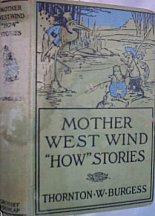
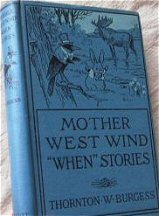
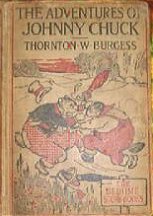
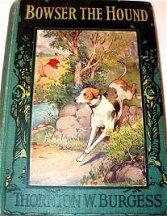
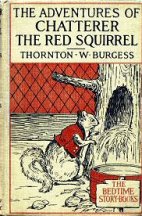
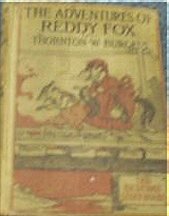
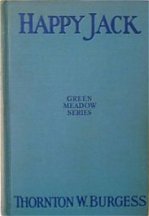
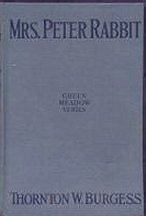
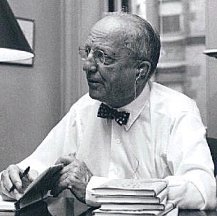 Thornton
Waldo Burgess is the son of Caroline F. Haywood and Thornton
W. Burgess Sr. a direct descendent of Thomas Burgess. (one of the
first settlers of Sandwich, Massachusetts in 1637.) He was born in
Sandwich on January 14, 1874 and died June 5, 1965, at the age of 91. Burgess
was brought up by his mother in Sandwich after his father died in the year
of his birth. They both lived in humble circumstances with relatives
or paying rent. As a youth he worked year round in order to earn money.
Some of his jobs included tending cows, picking arbutus or berries, shipping
water lilies from local ponds, selling candy and trapping muskrats. William
C. Chipman, one of his employers, lived on Discovery Hill Road a wildlife
habitat of woodland and wetland. This habitat became the setting of so
many of his stories in which he refers to Smiling Pool and the Old Briar
Patch. Graduating from Sandwich High School in 1891, Burgess attended
a Business College in Boston from 1892-93. At the age of 17 Burgess briefly
lived in Boston and then moved to Springfield, Massachusetts. He bought
a place in Hampden, Massachusetts in 1925 and made it his permanent home
in 1957. Returning frequently to Sandwich, Burgess claimed that to be his
birth place and spiritual home. After his death the Massachusetts
Audubon Society purchased his Hampden home and established the Laughing
Brook Nature Center at that location. Many of his childhood experiences
and the people he knew influenced his interest and concern for wildlife.
Thornton
Waldo Burgess is the son of Caroline F. Haywood and Thornton
W. Burgess Sr. a direct descendent of Thomas Burgess. (one of the
first settlers of Sandwich, Massachusetts in 1637.) He was born in
Sandwich on January 14, 1874 and died June 5, 1965, at the age of 91. Burgess
was brought up by his mother in Sandwich after his father died in the year
of his birth. They both lived in humble circumstances with relatives
or paying rent. As a youth he worked year round in order to earn money.
Some of his jobs included tending cows, picking arbutus or berries, shipping
water lilies from local ponds, selling candy and trapping muskrats. William
C. Chipman, one of his employers, lived on Discovery Hill Road a wildlife
habitat of woodland and wetland. This habitat became the setting of so
many of his stories in which he refers to Smiling Pool and the Old Briar
Patch. Graduating from Sandwich High School in 1891, Burgess attended
a Business College in Boston from 1892-93. At the age of 17 Burgess briefly
lived in Boston and then moved to Springfield, Massachusetts. He bought
a place in Hampden, Massachusetts in 1925 and made it his permanent home
in 1957. Returning frequently to Sandwich, Burgess claimed that to be his
birth place and spiritual home. After his death the Massachusetts
Audubon Society purchased his Hampden home and established the Laughing
Brook Nature Center at that location. Many of his childhood experiences
and the people he knew influenced his interest and concern for wildlife.
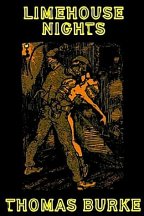
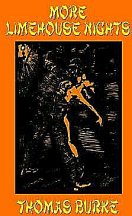 Contents:
Contents:
